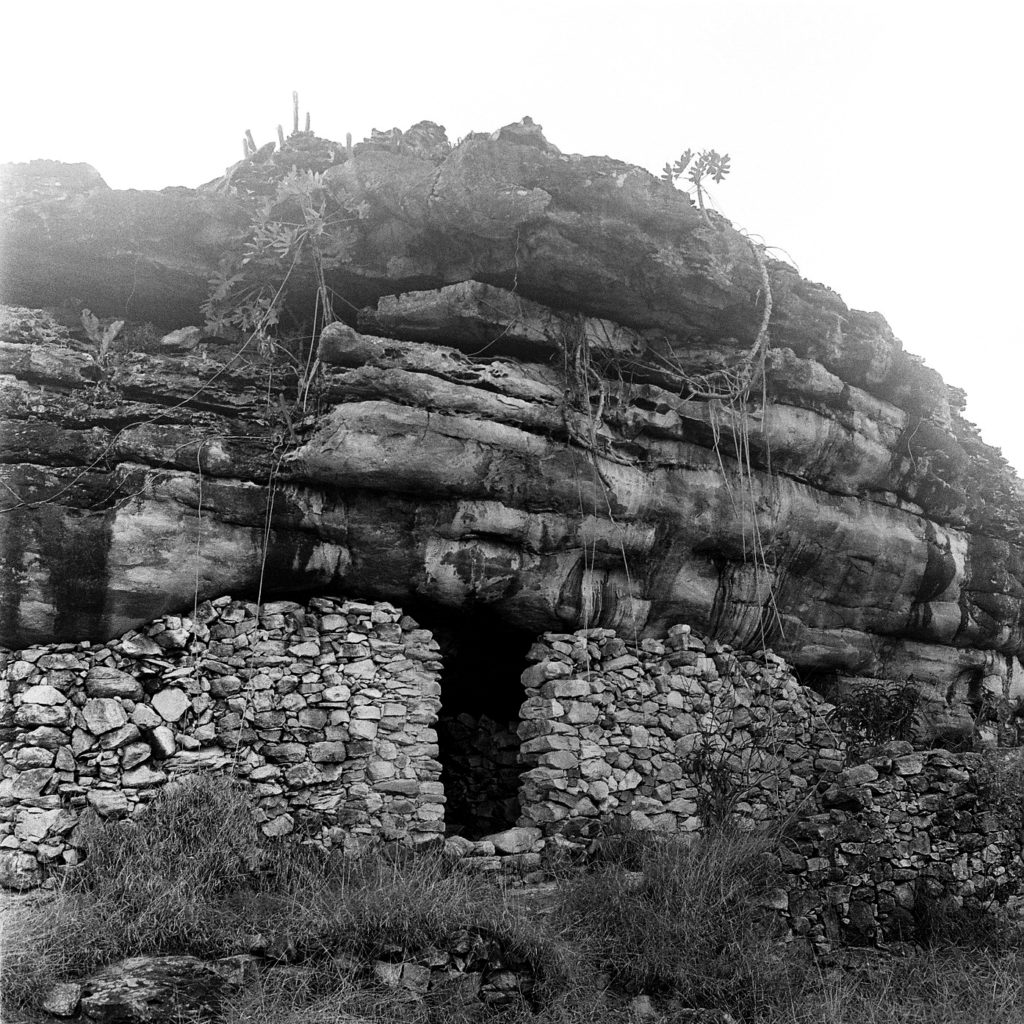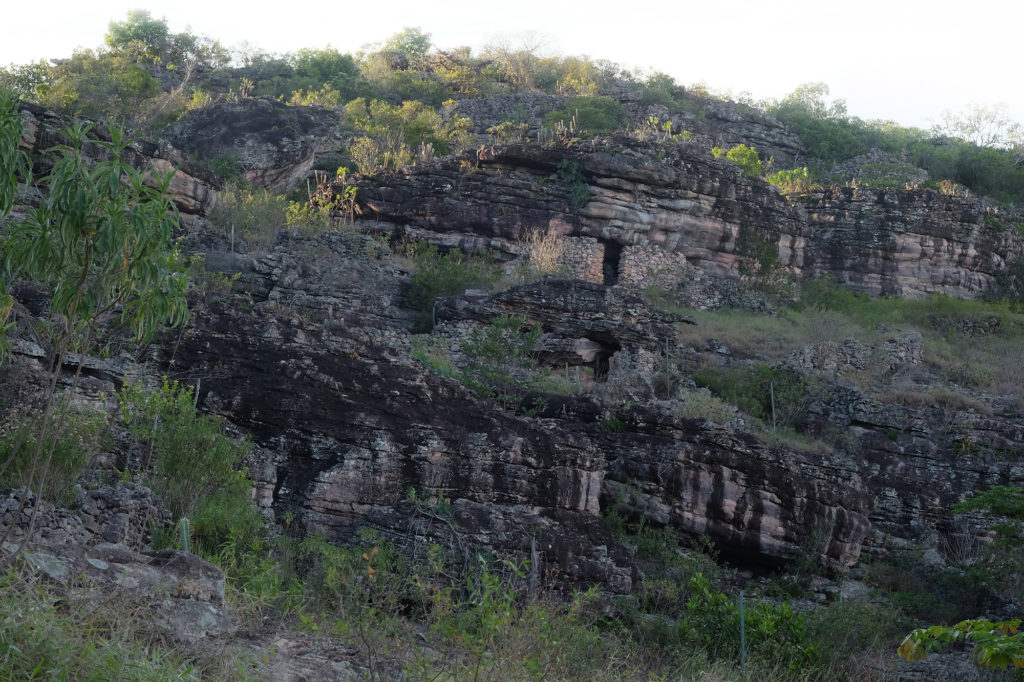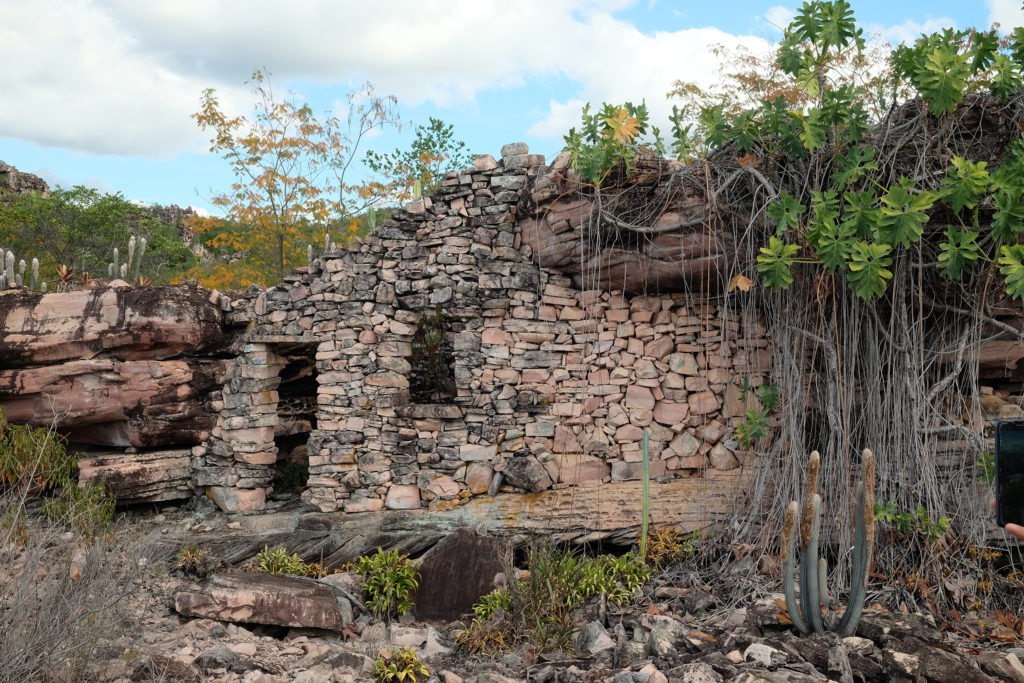Preservar a riqueza do patrimônio arquitetônico da região e desenvolver seu potencial de plataforma para projetos-modelo em sustentabilidade.
Mapeamento e documentação das tocas, as antigas casas de garimpeiros que aproveitam grandes rochedos e lajedos em sua construção. Portanto pelo termo “tocas” devemos entender as residências em cavernas ou grutas da época do garimpo. Espaços de arquitetura espontânea, nos quais as estruturas tectônicas existentes são transformadas em moradia, ao se adicionar paredes, portas, janelas e telhados. O principal material utilizado nessas construções são as pedras movimentadas pela mineração do diamante, proibida na Chapada em 1994.
O núcleo se preocupa com esta singular maneira de se construir e habitar da região. Organizamos grupos de trabalho para pesquisa de campo e documentação das centenas de tocas espalhadas no lado leste da Chapada, com o objetivo de produzir um inventário dessas construções sustentáveis que exploram noções mais antigas de tecnologias e para-tecnologias.
A arquitetura que acontece na comunidade de Igatu responde aos problemas urgentes do meio ambiente e das mudanças climáticas, através de práticas construtivas ligadas ao contexto, de baixo carbono e de alto impacto sociocultural. Sendo o trabalho na construção e na manutenção dos edifícios em pedra importante fonte de renda local.


stone architecture
Preserving the region’s rich architectural heritage and developing its potential as a platform for sustainability model projects.
Mapping and documenting tocas, which are old stone houses built by artisan miners using large boulders and flagstones. Thus, by the term “tocas,” we mean dwellings in caves or grottos from the artisan mining era. Spaces of spontaneous architecture, where existing tectonic structures are transformed into dwellings by the addition of doors, windows, or roofing. The main material used in these buildings were stones that were dislocated as a result of diamond mining, which was prohibited in the Chapada Diamantina in 1994.
This group focuses on this unique means of building and inhabiting the region. We organize working groups for field research and documentation of hundreds of tocas scattered throughout the Eastern side of the Chapada Diamantina, with the goal of producing an inventory of these sustainable constructions that explore older notions of technology and para-technology.
The architecture that takes place in the community of Igatu responds to urgent environmental issues and climate change, through constructive practices linked to the context, with low carbon footprint and high socio-cultural impact. Work done to build and maintain stone structures represents a significant source of local income.
